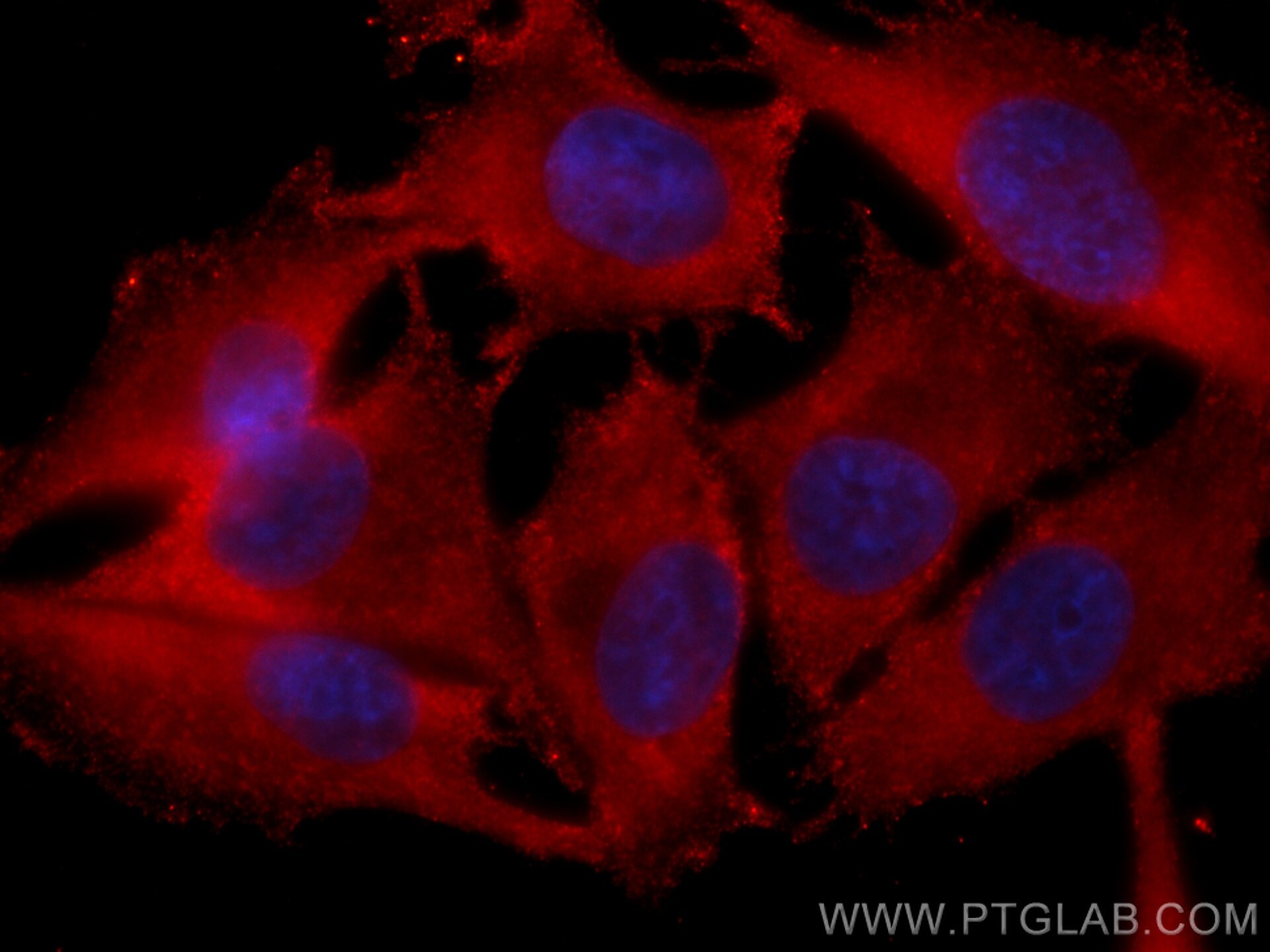Anticorps Monoclonal anti-DLC1
DLC1 Monoclonal Antibody for IF
Hôte / Isotype
Mouse / IgG1
Réactivité testée
Humain
Applications
IF
Conjugaison
CoraLite®594 Fluorescent Dye
CloneNo.
1G10H12
N° de cat : CL594-66894
Synonymes
Galerie de données de validation
Applications testées
| Résultats positifs en IF | cellules A375, |
Dilution recommandée
| Application | Dilution |
|---|---|
| Immunofluorescence (IF) | IF : 1:50-1:500 |
| It is recommended that this reagent should be titrated in each testing system to obtain optimal results. | |
| Sample-dependent, check data in validation data gallery | |
Informations sur le produit
CL594-66894 cible DLC1 dans les applications de IF et montre une réactivité avec des échantillons Humain
| Réactivité | Humain |
| Hôte / Isotype | Mouse / IgG1 |
| Clonalité | Monoclonal |
| Type | Anticorps |
| Immunogène | DLC1 Protéine recombinante Ag24404 |
| Nom complet | deleted in liver cancer 1 |
| Masse moléculaire calculée | 171 kDa |
| Poids moléculaire observé | 115 kDa |
| Numéro d’acquisition GenBank | BC054511 |
| Symbole du gène | DLC1 |
| Identification du gène (NCBI) | 10395 |
| Conjugaison | CoraLite®594 Fluorescent Dye |
| Excitation/Emission maxima wavelengths | 588 nm / 604 nm |
| Forme | Liquide |
| Méthode de purification | Purification par protéine G |
| Tampon de stockage | PBS avec glycérol à 50 %, Proclin300 à 0,05 % et BSA à 0,5 %, pH 7,3. |
| Conditions de stockage | Stocker à -20 °C. Éviter toute exposition à la lumière. Stable pendant un an après l'expédition. L'aliquotage n'est pas nécessaire pour le stockage à -20oC Les 20ul contiennent 0,1% de BSA. |
Informations générales
Deleted in Liver Cancer 1 (DLC1) is a RhoGAP-containing tumor suppressor that inhibits angiogenesis by repressing VEGF production in epithelial cells. DLC1 is often down-regulated in a variety of cancers, such as those of the liver, lung, breast, stomach, brain, colon and prostate due to either genomic deletion or aberrant DNA methylation.
Protocole
| Product Specific Protocols | |
|---|---|
| IF protocol for CL594 DLC1 antibody CL594-66894 | Download protocol |
| Standard Protocols | |
|---|---|
| Click here to view our Standard Protocols |


